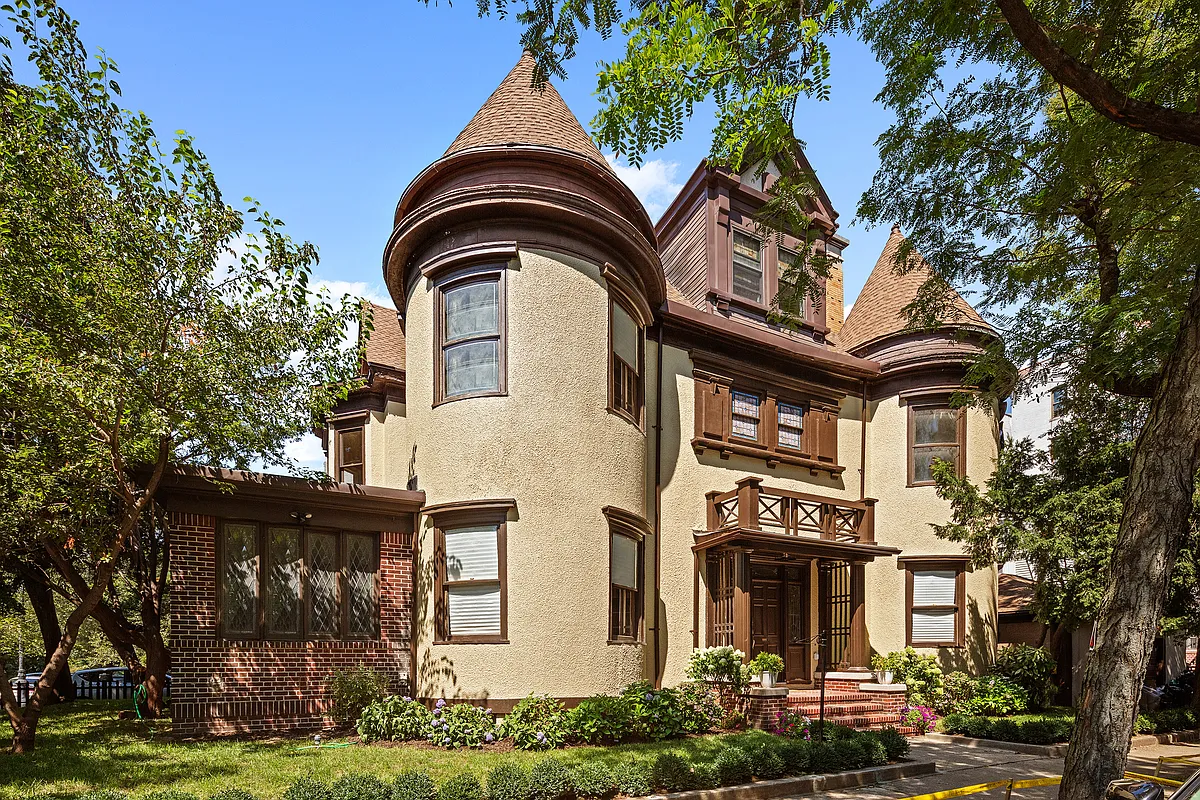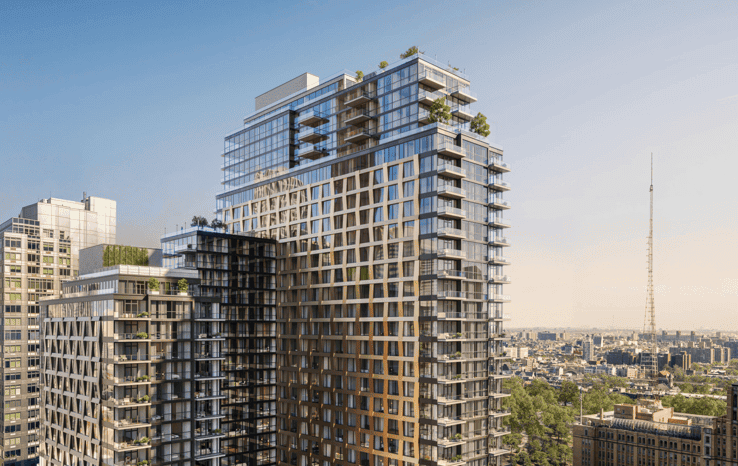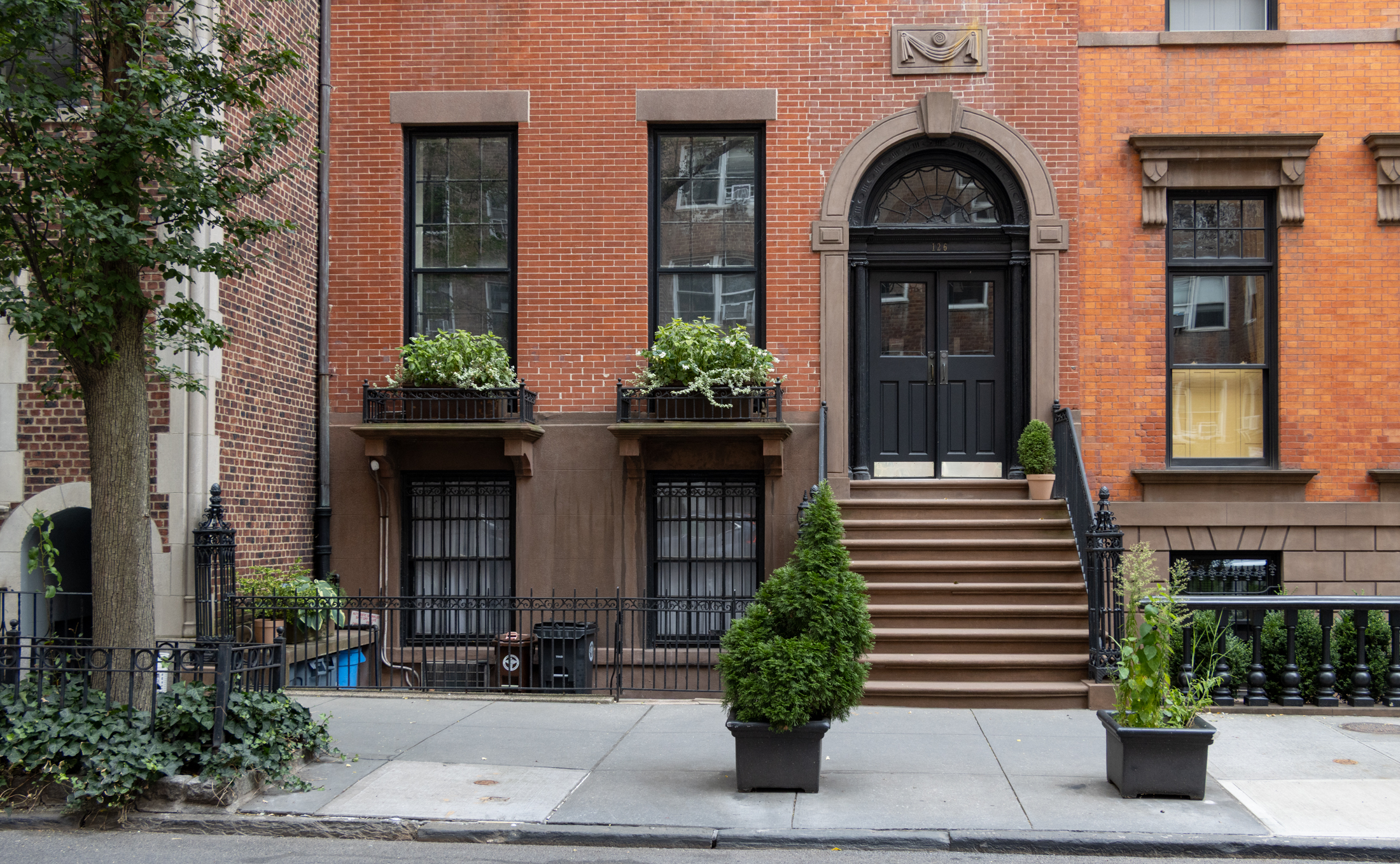Building of the Day: 279 Lafayette Avenue
The BOTD is a no-frills look at interesting structures of all types and from all neighborhoods. There will be old, new, important, forgotten, public, private, good and bad. Whatever strikes our fancy. We hope you enjoy. Address: 279 Lafayette Ave, corner of St. James Place Name: Emmanuel Baptist Church Neighborhood: Clinton Hill Year Built: 1886-87…


The BOTD is a no-frills look at interesting structures of all types and from all neighborhoods. There will be old, new, important, forgotten, public, private, good and bad. Whatever strikes our fancy. We hope you enjoy.
Address: 279 Lafayette Ave, corner of St. James Place
Name: Emmanuel Baptist Church
Neighborhood: Clinton Hill
Year Built: 1886-87
Architectural Style: French Gothic
Architect: Francis H. Kimball, earlier chapel by E. Roberts, 1882-3.
Landmarked: Yes (Clinton Hill HD)
Since this is the week before Christmas, it’s going to be Church Week on the BOTD, and what better building to choose first than Emmanuel Baptist? Aside from the appropriate name, it is also one of Brooklyn’s finest architectural treasures, designed by Francis Kimball, a major name in late 19th century New York City architecture.
The church is another legacy of Charles Pratt, a devout Baptist, who started and paid for the church, after quitting his old church, Washington Ave. Baptist Church, on Gates Ave, taking others with him.
The design of the main church was given to Kimball, who had been working as a builder since the age of 14, and had cut his design teeth as head architect for British Gothic Revivalist architect William Burges, on Trinity College in Hartford, Ct.

After Emmanuel Baptist, he would go on to design the Montauk Club, the NY Architectural Terra-Cotta Company Building in Long Island City, the Trinity and United Real Estate buildings on lower B’way, near Trinity Church, and the Gertrude Rhinelander Mansion on Madison Ave, now the Ralph Lauren flagship store, among other important projects.
Baptists are not generally a showy denomination, so the choice of a very ornate amalgam of French Gothic design may seem out of character, but then, I don’t see Charles Pratt paying for a simple plain building. However, due to the talents of Kimball, the result is quite a church.
It is built of Ohio sandstone, with buttresses, spires, gables and some of my favorite gargoyles in the city. From Kimball’s original rendering, he designed spires for the Lafayette Avenue towers, but these were never built.

Still, it’s a mix of several French Gothic styles and influences, and works well in the context of general design and in its place on the street. Inside is a more classic Baptist interior, with rich Victorian woodwork, stenciling, stained glass and the works, all in a radial seating plan, popular in Protestant churches with a strong preaching tradition.
An earlier chapel by Ebenezer Roberts is attached on the St. James Pl side, which was used until the main church was finished. A school building was added later, in 1927, on Lafayette Ave. This is one of Brooklyn’s best church complexes.




[Photos by Suzanne Spellen]





didn’t Pratt build this church out of spite for the (smaller, humbler) church next door after a series of anti-monopolist sermons? he probably requested the heaviest, most imposing design possible. lightness be damned!
If you think the building is nice…come inside for a service. It is a great place to be on Sunday.
Yeah–church week. Do Lafayette Avenue Presbyterian–my church home. Berlin restaurant gives it props by offering a drink by that name.
Other than the central pointed arch on the facade, the rose window, and the triple portal entrance, this building feels more like a revivial of late Romanesque rather than Gothic style. A bit of a mishmash of both really, but very nicely done.
Montrose, I like the concept that it is more Baptist Gothic than French Gothic. That works for me.
I have never been inside though I have often heard the interior is incredible; an outstanding American Protestant auditorium style church interior.
You are right, altervoce, it was made an individual landmark in 1968, pretty early into the landmarking process (1965), which shows the LPC was aware of its significance. The Clinton Hill HD was designated in 1981.
You are right, Minard, it is a very heavy building. There is nothing light and airy about it. But I still really like it. Way back when, in the mid-80’s, when I knew nothing about all of this historic designation stuff, I used to work around the corner on St. James, and I would wait for my bus across the street from the church, on Lafayette. I never got tired looking at all of the details on the church, and now that I know so much more about it, I still appreciate the details that make it great. Plus, the solidity of it all is very Baptist and Protestant: a rock of faith, as it were.
I believe Emmanuel Baptist is an individual landmark, not just included in the Clinton Hill Historic District. The interior is well worth seeing as well, if people get the opportunity.
This is my church home. The original church is on the St. James side and a few years later EBC built the building that you see in the photo. The interior is totally different from the exterior. I do recommend everyone to come visit… And the choir is GREAT!!!
I actually have never liked the design of this building. I think it misses the point of the Gothic style, which at its best gives the viewer the impression of sheer verticality and lightness. True French Gothic appears almost weightless. This is chunky, heavy, earth-bound gothic.
Had the spires been built it might have helped a little.
However, putting aside my reservations, this is a very famous building. Much loved by many and undoubtedly one of Kimball’s best surviving designs.